The discs that make up our spine are super-hydrated and fat when we wake in the morning. Sounds good, right?
But as we sit through the day, our hip flexors tighten, our glutes quit working, and our discs lose fluid. In this position, we don’t engage our transverse abdominis, so our lumbar spine has little muscular support. Needless to say, if we go all day in this scenario, our lumbar spine has a bad time.
Our superincumbent mass is comprised of everything above L5S1, where our lumbar spine and sacrum come together. The entire weight of this mass is borne on the vertebral body of L5. That means for an average 200-pound man, 60% of his body weight is borne on an area that is about 1.5 inches in diameter.
In order for this to work, we need stability. Stabilization of the lumbar spine and pelvis is necessary for any athletic endeavor or even just being healthy. And since we’ve established that our discs and ligaments can’t accomplish this all on their own, I’ve created a saucy list of exercises that will help to:
- Lengthen the muscles that become tight from sitting down
- Provide muscular stability during athletic activity
What We Know About Human Physiology
There are a multitude of receptors in the musculature that sense changes in muscle tissue length. Golgi tendon organs (GTO) reside in our tendons and respond to changes in tension at high and low intensity. Muscle spindles reside in the muscle fibers themselves. They act as a gauge for tendon and muscle length. These two receptors work together to measure changes in tension and then cue the muscle to fire effectively. When muscle strains or tears occur, the tension applied outweighs the muscular tensile strength and these receptors fail.
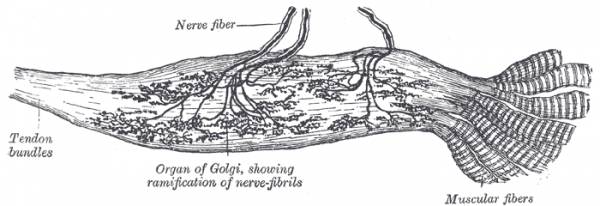
Golgi tendon organ.
There is great debate as to whether we should do static or dynamic stretching. Static stretching involves holding a position for a prolonged period of time, usually greater than thirty seconds. Dynamic stretching occurs when you move in and out of positions without holding. The prevailing research wisdom suggests that dynamic stretching is best prior to athletic activity, while static stretching is more useful following activity as a cool down.
In the upcoming exercises, there are specific prescriptions for each movement based on what we now know about muscle physiology, disc and lumbar spine health, and research. Static stretches should be a component of your daily gym cool down, and dynamic movements like the lunge with reach, dead bugs, and plank holds can be part of your warm up or just a supplement to your daily workout routine.
Couch Stretch
With an AbMat or something similar under your knee, place your foot against a wall in a lunge position. Try to straighten your torso as much as possible. Hold for 20-30 seconds. Do 3 times on each side.
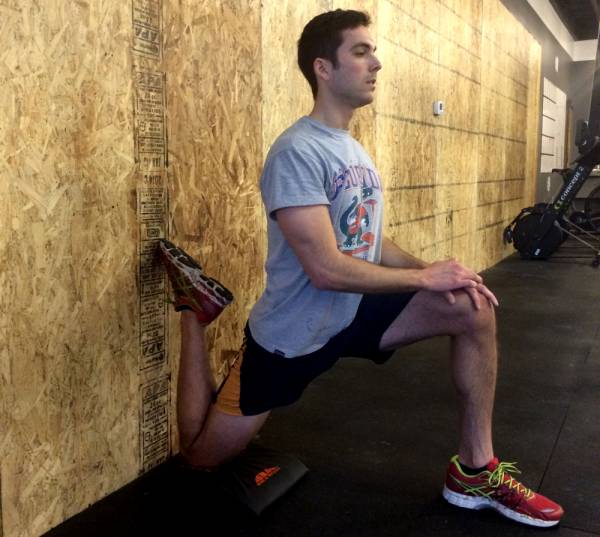
Downward Facing Dog
Starting in the top of your push up, pull your belly button toward your spine and raise your glutes up toward the sky. Press through the heels of your hands and squeeze your shoulder blades together. Hold 3-5 breaths. Repeat 5 times.

Table or Bench Piriformis Stretch
Using a table or workout bench, place one leg on the bench with your hip and knee at a ninety-degree angle. Slowly try to straighten your back leg into a lunge. Keeping your abdominals engaged, lean your chest forward. Hold 20-30 seconds. Repeat 5 times on each side.
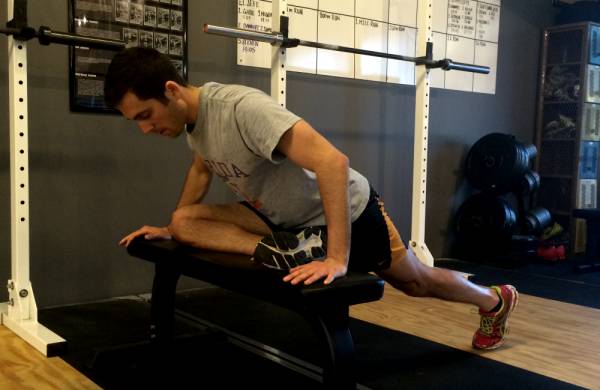
Medicine Ball Thoracic Spine Extension
Place a medicine ball behind you and position your body so the ball is aligned with the bottom of your ribcage. Holding a PVC pipe in your overhead squat position, use the medicine ball as a pivot point and reach overhead. You might even get a couple thoracic spine cracks! Repeat 10-15 times. Do 2 rounds.
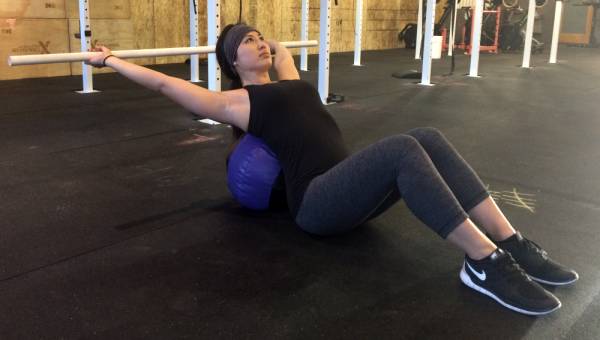
Goalie Stretch
From all fours, take each knee out to the side, with hips and knees bent to ninety degrees. Make sure to flex your feet up toward your head. Slowly try to move your butt closer to your heels until a stretch is felt in your adductors. Hold 20-30 seconds. Do 5 times.

Learn Where Your Transverse Abdominis Is
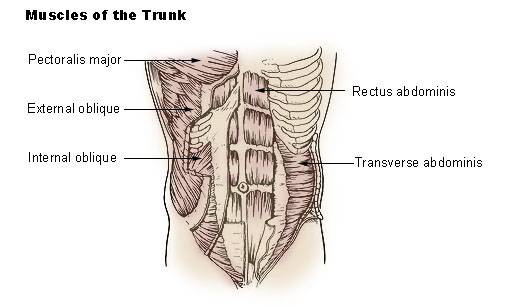
Side Plank
Lie on your side, feet together. Press yourself up through your hand and feet, keeping shoulder, hips, and knees aligned. Hold 20 seconds. Work up to 3 minutes.
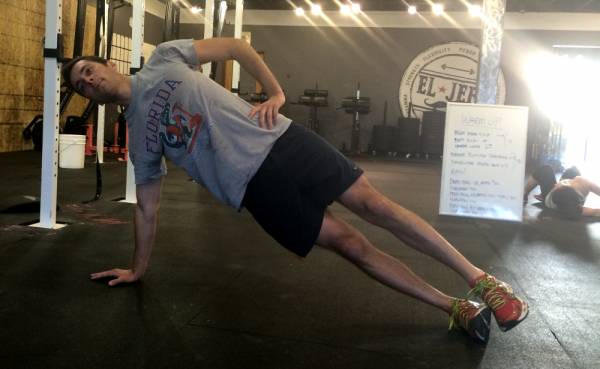
Prone Plank
Squeeze your glutes, pull your belly button toward your spine, and hold. Try to keep your butt from poking up to the sky. This can be done in push up position or on your elbows. Start with 20 seconds. Work up to 3 minutes.
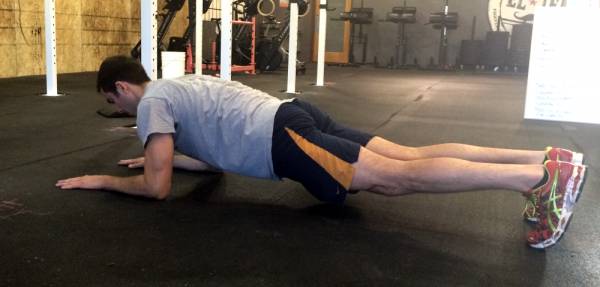
Lunge With Anterior Reach
Step into a deep lunge with your abdominals in tight, and reach forward toward your feet. Return to start. Repeat 10-15 times each side. Do 3 rounds.
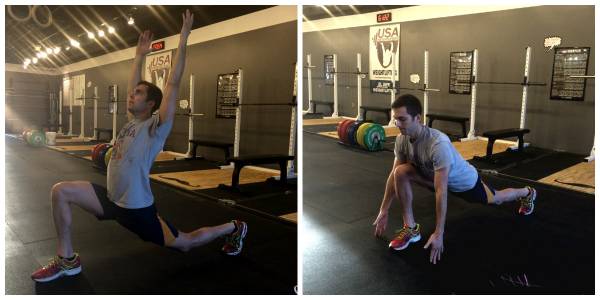
Left: Step into a deep lunge with your abdominals in tight; Right: Reach forward toward your feet.
Dead Bugs
Lying on your back with your belly button tight towards your spine, slowly lower one leg and take the opposite arm overhead. Switch sides. Make sure your low back doesn’t arch off the ground. Repeat 10-15 times each side. Do 3 rounds.
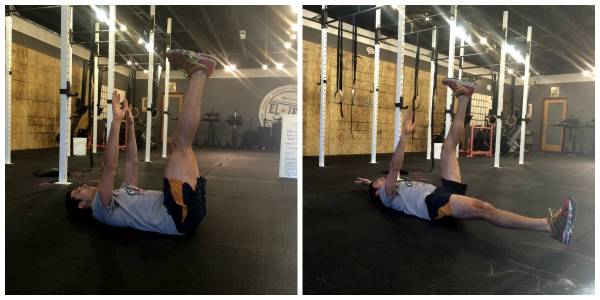
Left: Lie on your back; Right: Slowly lower one leg and take the opposite arm overhead.
Fire Hydrant
On all fours, pull your belly button toward your spine. Keeping your pelvis level, raise your knee out to the side. You might place a foam roller across your low back to make sure you keep your pelvis and lumbar spine stable. Repeat 8-12 repetitions each leg. Do 3 rounds.
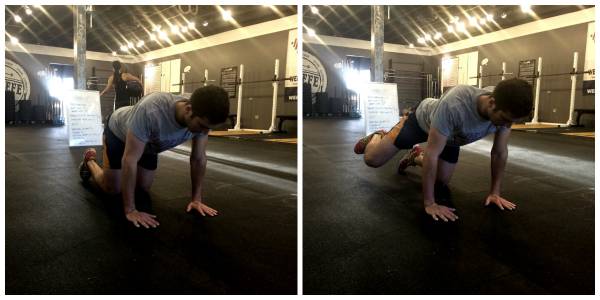
Left: On all fours, pull your belly button toward your spine: Right: Raise your knee out to the side.
Check out these related articles:
- The Best Back Workouts
- Why Your Approach to Fixing Your Low Back Is Making It Worse
- Understanding the Brain Is the Key to Being Pain-Free
- What’s New on Pulse Beat Fit Today
Photo 1 courtesy of Shutterstock.
Photo 2 “Gray938.” Licensed under Public Domain via Wikimedia Commons.
Photo 8 “Illu trunk muscles.” Licensed under Public Domain via Wikimedia Commons.






